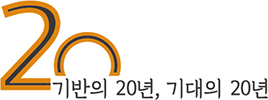여름정기학술대회
2022여름초록
발표자 및 발표 내용
| 소속 |
|
|---|---|
| 발표구분 |
|
| 포스터발표 |
|
| Brief Oral Presentation 발표신청 |
|
| Keyword |
주저자
| 이름 | |
|---|---|
| 소속 | |
| 국가 |
공동저자
| 공동저자 |
|
|---|
접수자
| 이름 | |
|---|---|
| 소속 |
Amphenicols
are widely used in livestock and poultry breeding and production. This study
aimed to develop a validated method for simultaneous quantification of
chloramphenicol (CAP), thiamphenicol (TAP), florfenicol (FF), and florfenicol
amine (FFA) residues in beef, pork, chicken, flatfish, eel, and shrimp using a quick, easy, cheap, effective, rugged, and safe
(QuEChERS) extraction method coupled with UPLC-MS/MS. Primary-secondary amine
(PSA) and MgSO4 were used for sample purification. The analytes were
separated on a reversed-phase analytical column and mobile phase consisting of
(A) distilled water and (B) acetonitrile with 0.1% acetic acid were used to
achieve optimal chromatographic separation. Matrix matched standard calibration
curves (R2≥0.9941) were obtained for concentration equivalent to ×1/2, ×1,
×2, ×3, ×4, and ×5 fold the maximum residue limit (MRL) stipulated by the
Korean Ministry of Food and Drug Safety (KMFDS). The KMFDS has banned the use
of CAP in animal products. Thus, it was analyzed based on the minimum required
performance limit (MRPL) of KMFDS. Recoveries
of 64.3~116.5%, with relative standard deviations (RSDs) of ≤18.05% (intraday
and interday), were obtained for each sample at three spiking concentrations
(CAP:×1/2, and ×6 the MRPL values; TAP, FF,, and FFA:×1/2, ×1
and ×2 the MRL values). The calculated limits of detection
(LODs) and limits of quantification (LOQs) were 0.005–3.1 and 0.02–10.4 μg/kg,
respectively. The developed method was successfully applied for monitoring
samples obtained from local markets in Seoul, Republic of Korea.
The study was supported by the Ministry of Food and Drug Safety Administration, Republic of Korea [grant number 20162MFDS621] in 2020.
게시물수정
게시물 수정을 위해 비밀번호를 입력해주세요.
댓글삭제게시물삭제
게시물 삭제를 위해 비밀번호를 입력해주세요.


